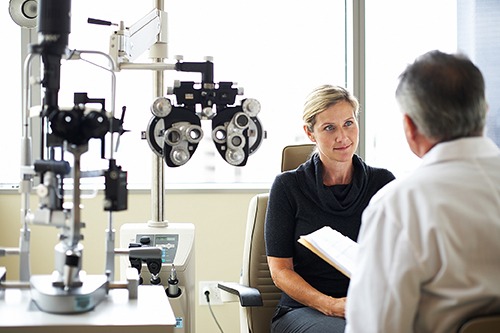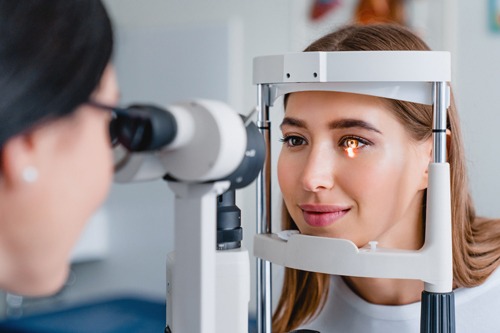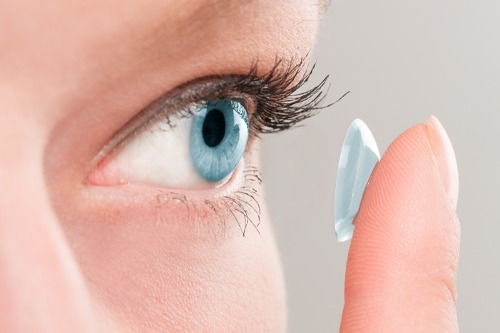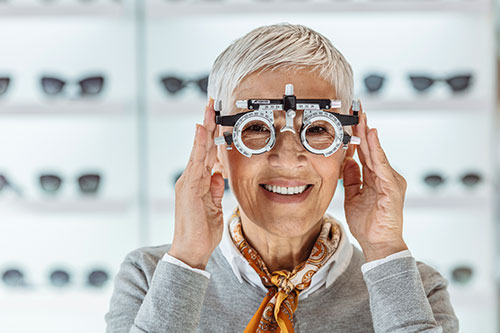- (440) 846-EYES
- info@vitaleyesoptometry.com
- 19796 West 130th Street Strongsville, Ohio 44136
At VitalEyes in Strongsville, Ohio, we provide well vision exams to patients ages 5 and up. Through a comprehensive well vision exam, not only will the doctor determine if an eyeglass prescription is necessary but the patient will be screened for all types of eye health conditions.

Based on the results of these tests, your doctor will either recommend no further treatment, prescribe corrective lenses, change your current prescription, or recommend further testing.
If you are in need of your annual well vision exam call VitalEyes today to make your appointment.


Blurry vision is most commonly caused by uncorrected refractive errors such as nearsightedness (myopia), farsightedness (hyperopia), astigmatism or presbyopia which can be corrected with eyeglasses, contact lenses or refractive surgery. Blurry vision can also be caused by various diseases or disorders of the eye such as cataracts, macular degeneration or dry eye syndrome. If you are noticing blurred vision, call our office today for an appointment.

Dry Eye Syndrome (also known as dry eye disease, dysfunctional tear syndrome, and keratitis sicca) is a condition in which the quantity or quality of tears is inadequate to lubricate and nourish the front surface of the eye. Tears are necessary for maintaining the health of the front surface of the eye and providing clear vision. Dry Eye Syndrome is a common and often a chronic problem, particularly in older adults and those diagnosed with autoimmune disorders such as rheumatoid arthritis and Sjogren’s Syndrome.

People with Dry Eye Syndrome may experience the following symptoms:
Risk Factors for Dry Eye Syndrome:
Diabetes can lead to diabetic retinopathy, a disease of the blood vessels of the retina. High blood sugar levels cause damage to the blood vessels of the retina causing them to swell and leak, or close, preventing blood from passing through. Sometimes abnormal new blood vessels grow in the retina called neovascularization. These new blood vessels are fragile and prone to breakage leading to scarring and permanent vision loss. In the early stages, diabetic retinopathy will cause few if any symptoms.
As the disease progresses you might notice such symptoms as:
Patients with diabetes should have a dilated eye exam at least once every year. If you are being treated for diabetes and are due for your annual diabetic eye exam call our office today to schedule an appointment.

Glaucoma is a complex disease causing damage to the optic nerve head that can lead to progressive, irreversible vision loss.
Risk factors for developing glaucoma are:
Your risk for developing glaucoma increases with each risk factor you possess. Call VitalEyes today to schedule an appointment.

Macular degeneration is a disease of the central portion of the retina, or macula. The macula is the part of the retina that controls our ability to read, drive a car, recognize faces or colors and see objects in fine detail. Macular degeneration is a disease that causes deterioration of this crucial part of our retina. The number one risk factor for macular degeneration is age and is most likely to occur in those 55 and older.
Other risk factors include:
There is currently no cure for macular degeneration but there are things you can do to reduce your risk and possibly slow the progression once you’ve been diagnosed. For example, one can pursue lifestyle changes in diet, exercise, smoking cessation, and UV protection.

Keratoconus develops when the cornea, the clear dome-shaped window at the front of the eye, thins and bulges like a cone. This change in the shape of the cornea causes light rays to defocus and scatter inside the eye. As a result, the vision is blurry and distorted, making daily tasks like reading or driving difficult.
The treatment can include glasses and soft contact lenses in early or mild cases but rigid or scleral contact lenses may be required in more advanced cases. A newer treatment called Corneal Cross-Linking has shown great promise to slow the progression of keratoconus.

Call us today at (440) 846-EYES